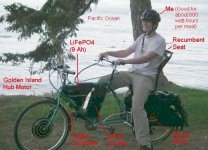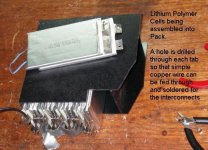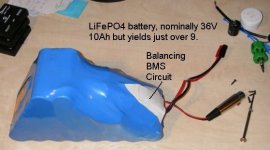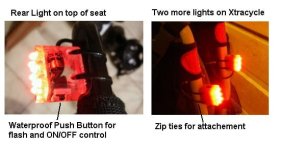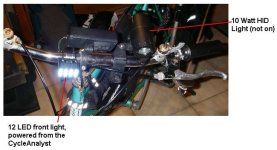A big part of this trip is to field test a number of components in a seriously demanding manner, and the regen motor controller is chief among them. This unit is quite a few years in the making, I think I'm at PCB revision number 12 or 13 now.

There are a few things this controller does which have been IMO long overdue in the ebike scene:
1)
Programmable limits : All of the controller parameters such as maximum battery current, maximum motor current, low voltage cutoff, max regen voltage etc. can be set to whatever value you like within the limits of the controller. With this 6 mosfet version, the battery current limit can be set from 0 - 30 amps, the motor current limit can be set from 0 - 45 amps.
2)
Completely Waterproof: The entire controller is potted in epoxy so there is simply no possibility even of water damage. It can be run entirely submersed, in fact the controller would like that for the great heatsinking.
3)
Small Size: This thing is about 1/10th the size of the Crystalyte 35A motor controllers so it can actually mount discretely on the bicycle.
4)
Proportional Regen: When the regen switch is activated, then the throttle controls the intensity of the regen braking. The regenerative braking is motor current (hence torque) regulated, and you can set the maximum regen motor current in software.
5)
Pulse by Pulse Current Limiting: You can short the output motor leads and run the controller full throttle and not blow a mosfet. Nice feature to have when the axle spins out and severs all the motor leads.
6)
Current Throttle: The throttle input directly controls the battery current and hence the vehicle power. If you have the battery current limit programmed to say 20A, and ride half throttle, the controller will deliver 10A of power regardless of your speed.
7)
Sensored and Sensorless: If there is a hall cable connected it will run as a sensored motor controller, if there are no hall signals present it operates sensorlessly. If the hall senor was initially connected, and then fails in the middle of your ride, the controller will detect this and switch over to sensorless mode without loosing a beat. I don't really need to say much more for people to know what this means for reliability!
8.)
Overtemperature Protection: Rather than shutting down when the controller gets hot and leave you stranded on a hill, the controller automatically scales back the motor current limit value as the heatsink warms up, so it will protect itself from getting too hot while at the same time never cutting out completely.
There are a few more things too, but I think that sums up the important ones.


